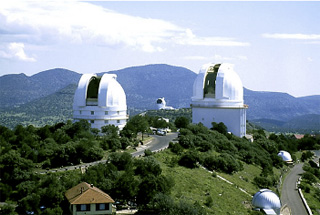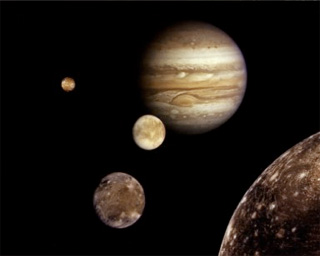My name is Neil Gehrels. I’m the Chief of the Astroparticle Physics Laboratory at NASA's Goddard Space Flight Center and Principal Investigator on the Swift Gamma-Ray Burst Explorer mission. My research interest is studying supernovae and gamma-ray bursts. I’ve been fascinated with exploding stars for many years.

McDonald Observatory
Credit: The University of Texas McDonald Observatory
My dad was an astronomer, so when I was a kid I spent a lot of time in observatories, like Yerkes Observatory in Williams Bay, Wisconsin. When I was six I spent one whole year up on the mountain at McDonald Observatory in Fort Worth, Texas. It was a remote site of telescopes with little houses up on the mountain. Actually this was not a great year because every morning we’d get bussed down to the local grade school, which was about an hour’s bus ride away. All the kids were ranchers’ kids and they didn’t seem to like the astronomers’ kids. So that was kind of a rough time but it was really interesting living on a mountain for a year. I’ve been interested in mountains ever since.
When I was in high school I started to get into music. I didn’t think of it this way at the time, but I was probably trying to steer away from the direction of my dad. I just wanted to do my own thing. So I studied music at the University of Arizona for four years and actually got a music degree. When I was about halfway through the program I realized that my real interests and talents were in science. I still loved music, so I finished that degree, but I also ended up earning a degree in physics. To this day, a favorite pastime is listening to music and plinking away at the guitar or piano.

Jupiter and its four planet-size moons, called the Galilean satellites, were photographed in early March 1979 by Voyager 1 and assembled into this collage.
Credit: NASA/JPL
I went to Caltech in physics for graduate work with fairly open ideas about what I might do, including high-energy physics and elementary particles and things like that, because these areas grabbed my attention. I really wasn’t sure I wanted to do astrophysics but luckily I stumbled into an excellent astrophysics group. What really enticed me to join the group was they had an instrument on the Voyager spacecraft. Voyager was flying by Jupiter and Saturn to study cosmic rays while the spacecraft was between the planets. I worked on the detector and helped calibrate the instrument by taking it to a particle accelerator to measure the signals for known particle inputs. When Voyager flew by Jupiter, the detector picked up a very unusual particle signature, which turned out to be energetic oxygen and sulfur nuclei from the volcanoes of Io, and I ended up doing my thesis on that. I had so much fun with my thesis that I became convinced astrophysics was what I wanted to do!
